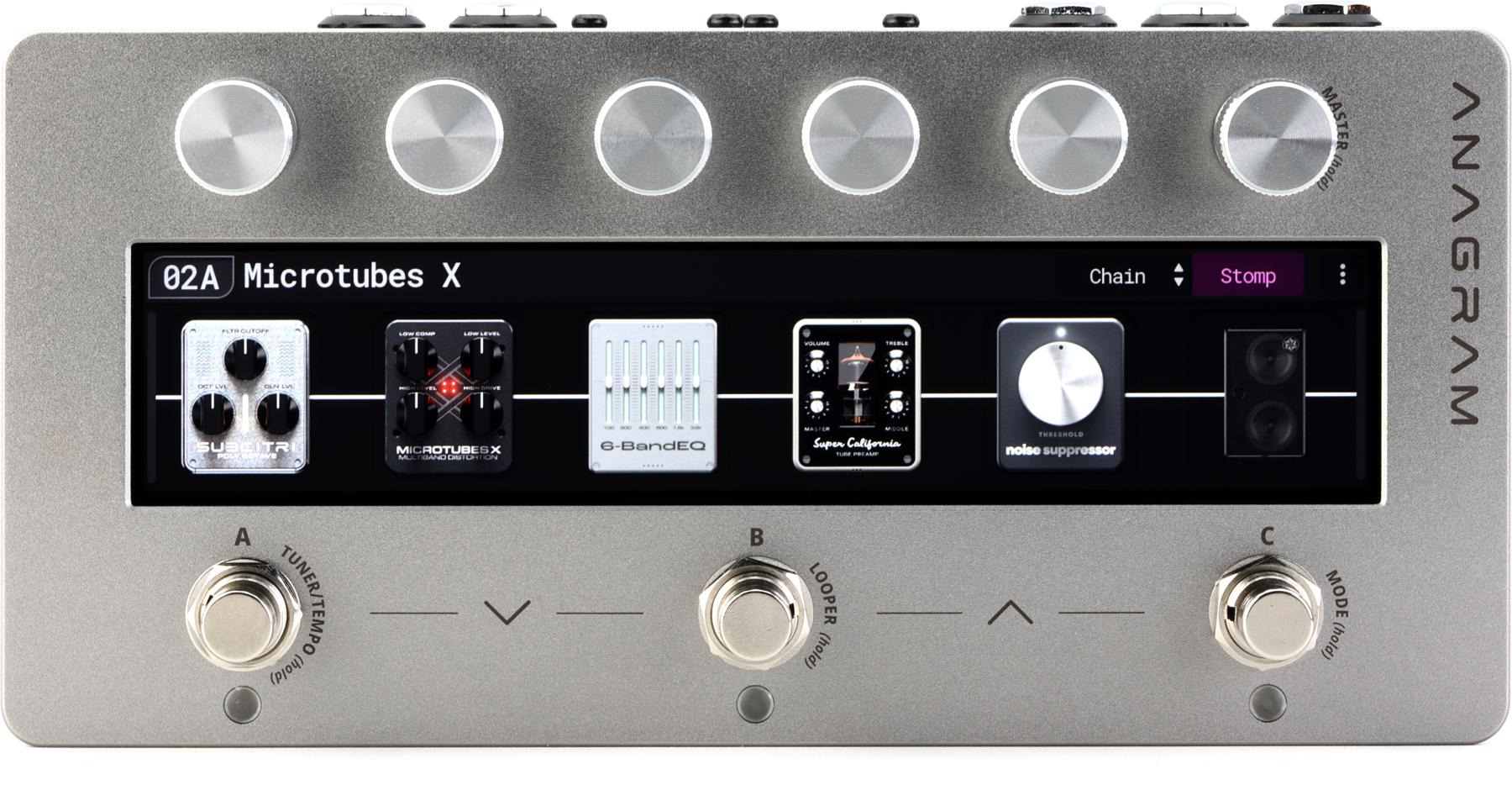If you love modulation—and lots of it—you can eat up a lot of pedalboard space fast. Modulation effects can be super-idiosyncratic and specialized, which leads to keeping many around, particularly if you favor the analog domain. The Kernom Elipse multi-modulator is pretty big and, at a glance, might not seem the best solution for real estate scarcity. Yet the Elipse is only about 1 1/4" wider than two standard-sized Boss pedals side by side. And by combining an analog signal path with digital control, it makes impressive, efficient use of its size—stuffing fine-sounding harmonic tremolo, phaser, rotary-style, chorus, vibrato, flanger, and Uni-Vibe-style effects into a single hefty enclosure. Many of the effects can also be blended and morphed into one another using a rotary control aptly called “mood.” The Elipse, most certainly, has many of those.
Modulator With Many Masks
Anywhere pedal hounds meet and chat you’ll encounter spirited talk about the way pedals sound relative to a certain gold standard. It makes sense. Benchmarks are useful for understanding anything. But one of the things I like best about the Kernom Elipse is how it eludes easy comparison to such standards, and how the fluidity of its controls make it sound unique. As with any review, I compared the Elipse to as many pedals as I have that are relevant. Here, that included an Ibanez analog chorus, Phase 90 and Small Stone phasers, an optical Uni-Vibe-style pedal, a Boss BF-2, Mu-Tron Phasor II clone, and more. But what made the Elipse stand out in this company was function as much as sound. Operating the Elipse with an open mind, rather than a quest to replicate another pedal’s sound, leads to intriguing, unique, and unusual tones more specialized modulators don’t always offer.
“The Elipse is pretty ambitious for an analog modulator, but doesn’t spread itself too thin.”
Three of the Elipse’s controls—speed, mix, and depth—function predictably. The latter two controls, however, change function depending on the pedal’s mood (or mode). In tremolo mode, setting the mix at noon generates complex, warbly, and elastic harmonic tremolo-like textures. At maximum, it shifts to a more binary, on/off sound akin to optical or bias tremolo. In chorus/vibrato mode, the noon position marks a 50/50 wet/dry mix of pitch shift and dry signal—the ingredients for any chorus. At maximum, the signal is 100 percent wet, yielding pure pitch-shift vibrato. The shape control, meanwhile, adjusts the LFO waveform. In tremolo mode that means moving between triangle- and sine-wave pulses. The swirl control is the wild card of the bunch. It adds big-time dimension to the Elipse in all modes. Through most of its range, it slathers slow phase on whatever modulation is already bubbling and burbling. In the latter third of its range, though, it also adds gain, and by the time you reach maximum, the output is discernibly thickened in the low-midrange zone. The gain and low-mid bump helps compensate for the perceived volume loss intrinsic to modulation. But they also excite different segments of the harmonic spectrum as you manipulate other modulation-shaping parameters—adding expansiveness as well as the thickness you might miss from vintage modulators.
Enunciation Modulation
Compared to many of the modulation pedals I used for contrast, the Elipse has a high-mid-forward voice. This frequency bias has advantages. It lends most of the Elipse’s modulation textures a clear, airy essence that keeps their character present when adding fuzz or big delay and reverb effects. It makes some modulations less chewy, but it’s also easy to imagine such textures slotting easily into a mix where some thicker analog modulators would gobble up harmonic space.
The basic EQ profile also makes it easier to probe the nuances in the “in-between” voices, living in the liminal spaces between pedal moods. When you start to play with these blended textures and various blends of drive, shape, mix, and depth, you encounter many sounds that veer from vintage templates in cool ways. Lathering on gain from the swirl control and lazy depth rates made the hybrid chorus/flange intense, dreamy, and enveloping. Similar blends of slow, heavy harmonic tremolo and rotary speaker sounded massive too.
The Verdict
The Elipse is pretty ambitious for an analog modulator, but doesn’t spread itself too thin. Players looking for one or two very specific modulation sounds might find the interrelationships between the Elipse’s controls too complex. The inability to save more than a single onboard preset without a MIDI switcher might frustrate guitarists used to all-digital pedals’ preset capabilities. Players that already have MIDI switchers in their rigs, however, could fall hard for the ability to switch between Elipse’s myriad, complex, analog-colored textures. With or without MIDI, it is an excellent analog modulator that offers colors galore.




















